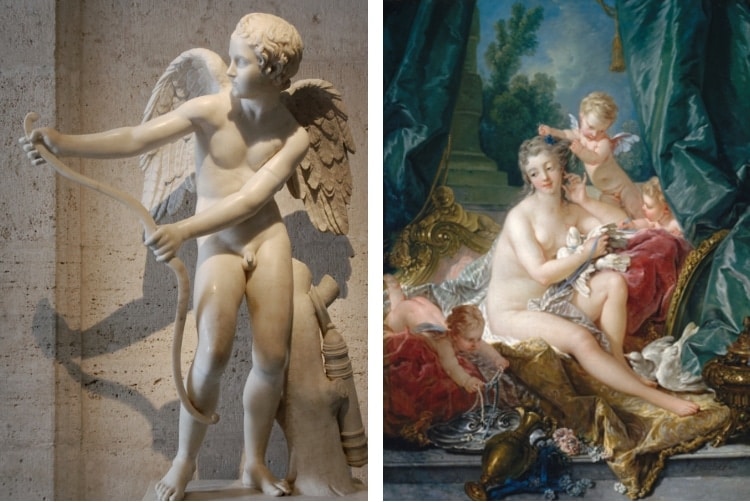
With his tiny wings, heart-tipped arrow, and angel-like appearance, Cupid is an iconic and instantly recognizable figure in popular culture. While, today, the cherubic character is typically seen adorning sentimental Valentine’s Day cards, romantic gifts, and festive decorations, his history transcends the holiday by thousands of years.
The concept of a Cupid-like character is rooted in ancient mythologies and is evident in a wide range of art from age-old cultures. Spanning several periods and styles, these spellbinding works illustrate the ever-changing evolution of Cupid, from a single, adolescent deity to schools of fluttering cherubs. Here, we explore Cupid’s role in art history in order to understand his metamorphosis from muse to mascot.
Who is Cupid?
In classical mythology, Cupid is the god of desire and love. Adapted by the Romans from the Greek god, Eros, Cupid is known for his ability to make individuals—both divine and mortal—fall in love (or flee in disgust) with his enchanted arrows.
While his genealogy varies according to myth, Eros is most often referred to as the child of Venus (Aphrodite in Roman mythology). Additionally, in both Greek and Roman stories, he is married to Psyche, a beautiful human-turned-goddess. Both of these figures are often included in artistic depictions of the god, which have been produced by artists for millennia.
Evolution in Art
Several important art movements have featured this fascination with Cupid. When explored chronologically, they offer a way to trace the figure’s evolution, beginning, of course, with Eros.
Classical Antiquity
Eros first appeared in ancient Greek art, like this red-figure bobbin from around 450 BC. In such depictions, Eros is portrayed as a slim adolescent with a large set of wings. Aside from these familiar features, he does not have any other attributes we have come to associate with Cupid, including his signature bow and arrow.
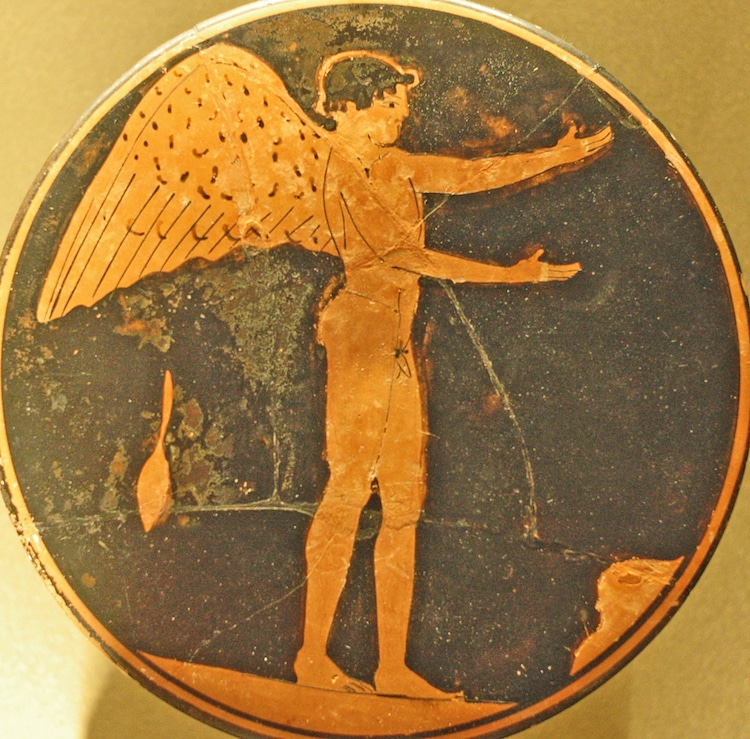
‘Eros,’ c. 470 BC–450 BC (Photo: The Louvre via Wikimedia Commons)
During the Hellenistic Period—an era renowned for its marble sculptures —Eros took on a more youthful appearance, marked by a fuller face and a chubbier physique.
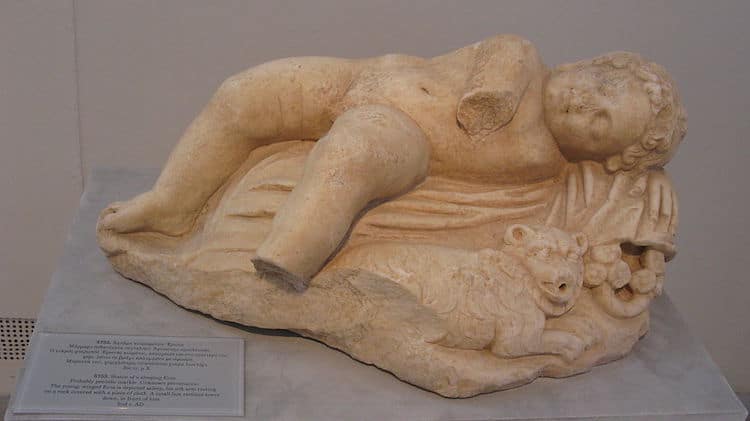
Statue of a Sleeping Eros, 2nd Century AD (Photo: Tilemahos Efthimiadis via Wikimedia Commons)
Additionally, depictions of the figure began to feature a bow and quiver of arrows.

Roman copy of a Greek sculpture by Lysippus, 2nd Century AD (Photo: Marie-Lan Nguyen via Wikimedia Commons
Middle Ages
During the Middle Ages, Eros became widely known as Cupid. Though he continued to appear as a winged child, he was often rendered with the proportions and features of an adult—an approach that is apparent in many Medieval depictions of babies and children.
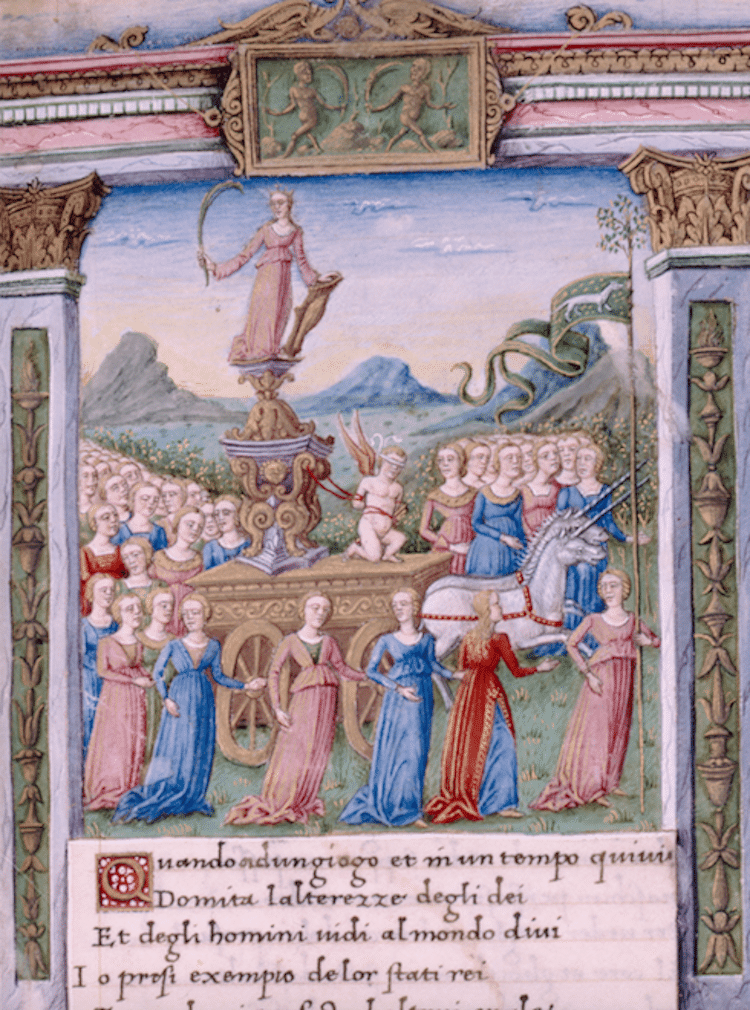
‘Miniature, border, and opening of Trionfi with a blinded Cupid shooting an arrow from atop the cart drawn by white horses,’ 1490 (Photo: The New York Public Library via Wikimedia Commons)
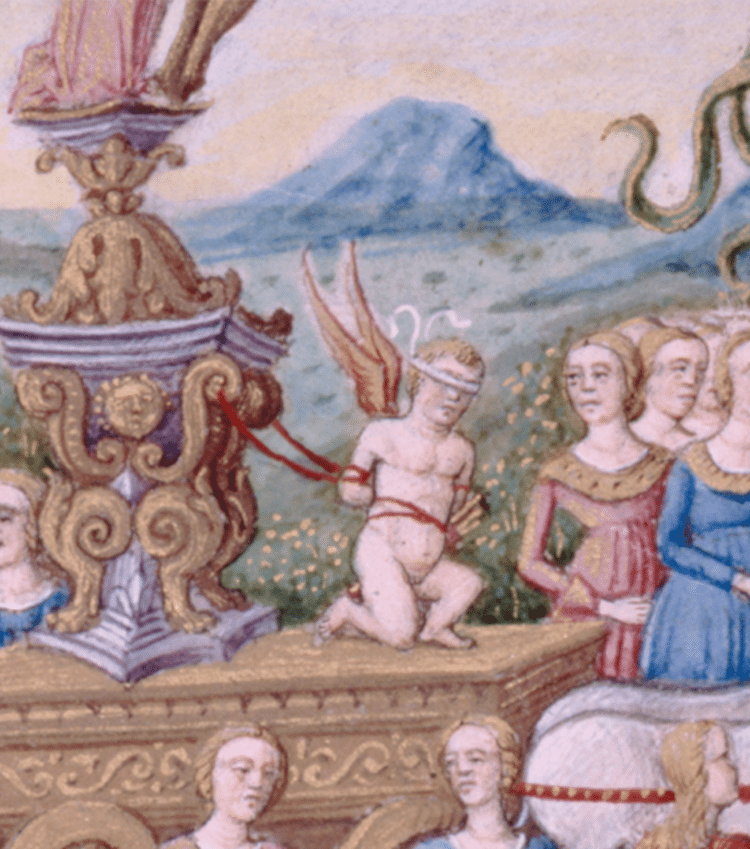
Detail
